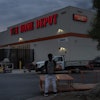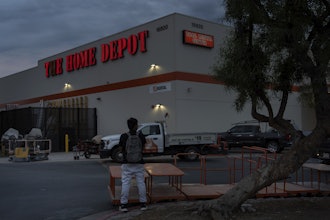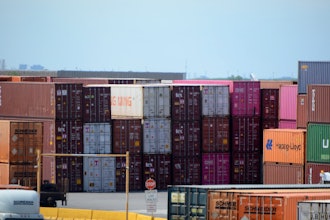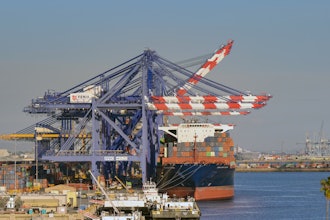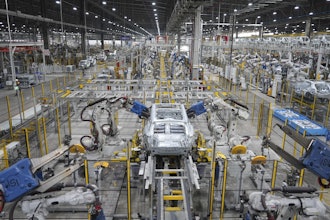Blue Ridge's complete solution includes proven inventory-alignment technology along with an investment-driven approach to support and buyer education—all delivered by a team with first-hand experience as inventory replenishment, supply-chain professionals. Industrial Distribution had a chance to chat with Greg White, Chairman & CEO of Blue Ridge, on how managing inventory is a changing game.
Industrial Distribution: How has a need for increased cash flow been an impetus for change when it comes to wholesale distribution’s adoption of inventory management strategies?
Greg White: Cash today is even more than usual, a distributor’s most valuable asset. The lack of surety around the marketplace, taxes and healthcare costs require companies to be more aware and prepared than ever before. Cash is a growth tool and sometimes a survival weapon. To remain agile in an unpredictable environment, distributors need to do more with less, and that includes inventory.
Every distributor’s largest physical asset is inventory, so everything they can do to manage that asset better is being considered these days. Companies are strengthening their service commitment to get and keep customers, but they must do it with as little inventory as possible. Only the precision and efficiency of technological solutions focused on distribution can deliver that. More and more companies are looking to Software-as-a-Service (SaaS) and cloud solutions to provide that focus and efficiency without a large cash outlay, or the time-consuming and risky implementation of traditional software
How would you explain to a distributor the best way to align inventory with demand fulfillment in order to increase cash flow?
The key to aligning your inventory for cash flow without jeopardizing service, is to look at 7 key elements on an item-by-item basis. Today, so many companies focus only on the forecast to try to accomplish this. Accurate demand forecasting is one key, but there is so much more to the process that can’t be overlooked. Managing each item individually for these other 6 elements is just as important as an accurate forecast.
- Accurate understanding of supplier lead-time and fill-rate to assure proper timing of orders
- Safety stock calculated to meet customer service goals rather than arbitrary days of supply
- Purchasing and supply-chain economics considered to reduce logistics costs
- Accurate replenishment quantities to assure the right amount arrives on time
- Causal demand considerations that account for promotions, future orders, etc. separate from regular replenishment
- Meeting order brackets and other logistics constraints to assure a valid order to the supplier
Managing these elements on an individual item basis has been proven over decades to improve service performance while minimizing inventories and generating sales improvement, market-share growth, profitability and cash flow increases in many companies in the industry. A process or technology that supports all 7 of these elements is game-changing for distributors, and solutions that specialize on distribution forecasting and replenishment have helped improve cash flow for many players in the industry.
Many of our readers have found themselves holding more inventory for customers as the economy has squeezed the supply chain. How might you caution distributors against “panic-based” reductions in inventory so they can maintain an approach that’s balanced enough to still serve their customers?
Panic is based on fear, and fear is usually based on uncertainty. Uncertainty has impacted wholesaler’s customers negatively in the past and they’re looking for ways to avoid that. For wholesalers to respond properly to their customer’s panic, they need to be certain that their approach is sound to avoid panic of their own and meet customers’ needs.
One way is simply to forecast customer demand better, and to have a better way to determine what inventory is necessary to fulfill demand. Wholesalers can also leverage the insights that their customers can give them to determine when customers will buy, and in what quantity. Then, they can segment that demand from the rest, and even set aside inventory for the customers that share the most with them.
Distribution focused forecasting and replenishment solutions can help avoid panic-based reactions by scientifically determining the best way to meet demand. The best assess trends, segment specific customer demand and define the optimal inventory levels required without breaking the bank. When wholesalers evolve to a level of management based on knowledge and foresight, rather than emotion, the knee-jerk reactions don’t occur.
What are the most important benefit that comes from SKU reduction, and why might it behoove an industrial distributor to reexamine the breadth of its product lines? How can they do this while still providing what their customers want?
The nature of this industry is that there are lots of products with very low demand. At the same time it’s what I call a “get the job done” industry. Customers are unforgiving if you don’t have something they perceive as standard. So the obligation is there to know what your “never out” items are. Additionally, items can often be related, and by cutting one item out of your mix you may inadvertently decrease the sales of a complimentary item.
A SKU rationalization process can help assure that the product mix is right, and when so, the benefits can be significant. We’ve seen companies reduce their inventory by 10% or more just by adjusting their SKU count. There are always those fringe items that customers can wait for that you can consolidate to a central branch and fulfill separately. These items can even be margin-makers because their rarity allows higher pricing if you can deliver quickly.
For more information, please visit www.blueridgeinventory.com.


